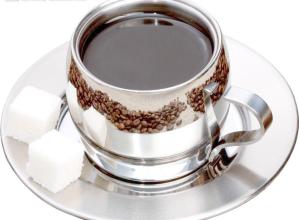Introduction to the treatment methods and methods of coffee beans there are several treatment methods of coffee beans
Pulped-natural, also known as honey treatment (Miel Process in Spanish), is said to refer to the process of making raw beans that are sun-dried with mucous membranes.
The honey treatment process is vulnerable to pollution and mildew, so it needs to be closely watched throughout the process, constantly turning, and speeding up drying, so as to avoid bad fermentation flavor. Its advantage is that it can best preserve the original sweet flavor of coffee ripe fruit, making the coffee show elegant black sugar flavor and drupe flavor, while the berry flavor also supports the basic aroma of red wine, which is considered to be a very elegant product. The popularity of honey-treated boutique coffee beans is largely due to its sweet and thick characteristics. in recent years, there are more and more boutique coffee beans called "Miel Process". It has also become the preferred material for international boutique coffee contestants. Not all producing areas can use the Brazilian half-sun method. Moisture-heavy producing areas promise to take out pectin pods and expose them outdoors, which are not easy to be dehydrated and hard, but are prone to parasitic mold. Therefore, mechanical semi-washing method has been developed in areas with heavy humidity, which saves both trouble and water.
First of all, the red fruit and half-green and half-red fruit sunk into the sink into the pulp sieving machine to remove the full pectin, and there is no need to take it to the sun, let alone pour it into the sink to ferment, but directly into the nearby pectin scraper (Demucilager) with a small amount of water, which can mechanically scrape off the sticky pectin shavings, take out the smooth pods, and expose them outdoors until the water content is reduced to 12%.
In addition, there are in vivo fermentation methods, such as Kopi Luwak raw beans are fermented and shelled in civets. Others, such as shit coffee, monkey coffee and so on, used to be used to bask in the sun in Brazil, but the quality varies greatly, making Brazil Chongqing synonymous with low-to-middle quality. However, in order to improve its quality and reverse its image, the world's largest coffee producer carried out a quality revolution in the 1990s and vigorously promoted the global half-sun method.
Brazilian coffee fields are endless and are mostly harvested mechanically in order to meet the economic benefits. When 75% of the coffee fruit in the coffee garden turns red, mechanical harvesting is started, followed by the same pre-washing operation, which is moved into the sink to remove floating beans, sift out the sunken beans, and then use a large pulp screening machine to dig out the pulp and remove the pods covered with pectin. The next stage is separate from the washing method: the sticky pods do not need to be moved into the tank to ferment, but to the outdoor bean drying farm. Because of the dry climate in Brazil, the sticky pectin on the pods will harden in about a day or so. Then use a large number of manpower to turn up and down, so that the pods dry evenly inside and outside, so as not to return to moisture and stink. In about two to three days, with the help of the natural force of the sun pass and dry climate, the pods can achieve a certain degree of dehydration. Then further dry with a dryer, the water content is reduced to 10.5%, and the pods are stored in a special container for about 10 days for further ripening, so as to stabilize the quality. Before export, the goat skin shavings (pods) are removed, and the coffee beans are removed. After the sticky pods of the red fruits are removed by hierarchical packaging, they are moved into a large tank, followed by the most important water washing and fermentation treatment to remove pectin shavings from the pods. This sticky material is not easy to wash away with water, so it is necessary to hydrolyze the pectin with all kinds of bacteria in the tank, decompose the pectin and wash the pods in the tank to accelerate the pectin to break away from the pods. The fermentation process takes about 16 to 36 hours, depending on temperature and humidity, when malic acid is naturally produced in the tank. Citric acid. Acetic acid. Lactic acid and propionic acid. Interestingly, the raw bean itself contains almost no acetic acid, but the fermentation process of washing treatment can increase the acetic acid concentration of the bean, which is beneficial to the flavor of coffee. Not only can these acids inhibit mold parasitism, some acid elves will also be mixed into beans (which is why washed beans taste so sour), but samples must be taken at any time to see if the sticky pectin on the pods is clean, and then decide whether to stop fermentation and take out clean pods. Once it lasts more than 36 minutes, it may ferment too much, producing too many fatty acids and butynic acid and giving off a bad smell. Moreover, beans mixed with too much acid will make coffee too sour and Chongqing is a bad bean!

Important Notice :
前街咖啡 FrontStreet Coffee has moved to new addredd:
FrontStreet Coffee Address: 315,Donghua East Road,GuangZhou
Tel:020 38364473
- Prev

What kind of milk is not suitable for coffee flower? what kind of milk is used for coffee flower?
The basic principle of milk foaming is to use steam to hit the milk, so that the liquid milk into the air, using the surface tension of milk protein to form many small foams, so that the liquid milk volume expansion, into a foam-like milk bubble. In the process of foaming, lactose is dissolved in milk because of the increase in temperature, and the effect of foaming is used to seal lactose in milk.
- Next

Introduction to the treatment of Coffee Soybean Honey introduction of three major treatment methods of coffee beans
We know that the three treatment methods of raw coffee beans can be divided into three types. The distinction between each method is based on the fact that several layers of matter are removed from the fruit before the coffee is dried. The following is a list of the three major processing methods: 1. Natural sun treatment: retain all substances 2. Honey treatment: remove the peel and pulp and retain part or all of the mucous membrane (honey) 3. Washing method
Related
- What is the meaning of lactic acid fermentation with coffee bean treatment?
- How to judge the state of foam by sound?
- How does the latte pull out the unicorn pattern? Come to get for a little trick to improve the flower pull!
- Will flower pulling affect the taste of the latte?
- Do you know the history of coffee?
- The difference between honey treatment and sun washing what is raisin honey treatment?
- What kind of milk can a novice use to make coffee foam to keep the foam longer? The correct method and skills of milking tutorial sharing
- Why do washed coffee beans taste sour? Flavor characteristics of washed Coffee
- Introduction to the skill of how to practice the size and height of water injection around the circle of hand-brewed coffee
- How do beginners practice coffee flower drawing from scratch?

